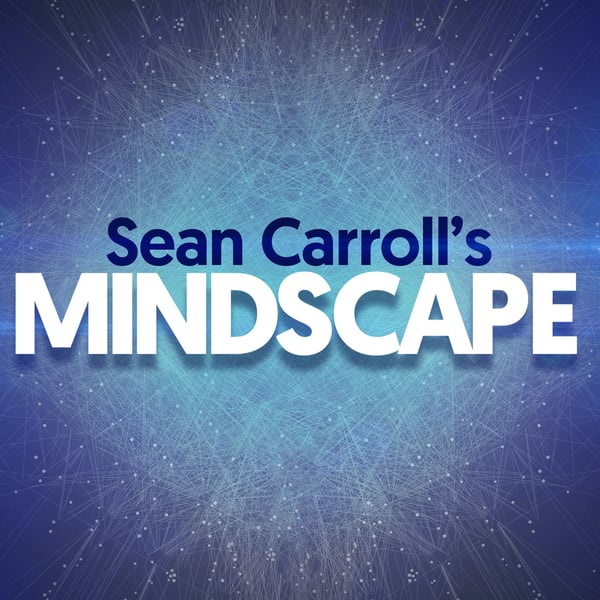243 | Joseph Silk on Science on the Moon
Sean Carroll's Mindscape: Science, Society, Philosophy, Culture, Arts, and Ideas
Sean Carroll | Wondery
4.8 • 4.4K Ratings
🗓️ 17 July 2023
⏱️ 71 minutes
🧾️ Download transcript
Summary
The Earth's atmosphere is good for some things, like providing something to breathe. But it does get in the way of astronomers, who have been successful at launching orbiting telescopes into space. But gravity and the ground are also useful for certain things, like walking around. The Moon, fortunately, provides gravity and a solid surface without any complications of a thick atmosphere -- perfect for astronomical instruments. Building telescopes and other kinds of scientific instruments on the Moon is an expensive and risky endeavor, but the time may have finally arrived. I talk with astrophysicist Joseph Silk about the case for doing astronomy from the Moon, and what special challenges and opportunities are involved.
Blog post with transcript: https://www.preposterousuniverse.com/podcast/2023/07/17/243-joseph-silk-on-science-on-the-moon/
Support Mindscape on Patreon.
Joseph Silk received his Ph.D. in Astronomy from Harvard University. After serving on the faculty at UC Berkeley and Oxford, he is currently Professor of Physics at the Institut d'astrophysique de Paris, Université Pierre et Marie Curie, and Homewood Professor of Physics and Astronomy at Johns Hopkins University. He is a Fellow of the Royal Society, the National Academy of Sciences, the American Astronomical Society, and the American Academy of Arts and Sciences. Among his awards are the Balzan Prize, the Henry Norris Russell Lectureship, and the Gruber Prize in cosmology. His new book is Back to the Moon: The Next Giant Leap for Humankind.
See Privacy Policy at https://art19.com/privacy and California Privacy Notice at https://art19.com/privacy#do-not-sell-my-info.
Transcript
Click on a timestamp to play from that location
| 0:00.0 | Hello, everyone. Welcome to the Mindscape podcast. I'm your host, Sean Carroll. |
| 0:04.0 | If you are a working cosmologist and you're studying the cosmic microwave background, |
| 0:09.3 | in particular how density perturbations in the microwave background grow into galaxies |
| 0:15.2 | and large-scale structure, etc. One of the first things you have to learn about is matter falls |
| 0:20.8 | in to some over-dense region and then photons stream out. And the photons streaming out damp the |
| 0:28.1 | oscillations and the growth of structure in that pre-CMB era. This phenomenon is called |
| 0:34.1 | silk damping after today's guest, Joseph Silk, who first wrote about it in 1968 in a paper on |
| 0:41.0 | galaxy formation in the cosmic background radiation. Pretty amazing when you think that we only |
| 0:46.0 | discovered the cosmic microwave background radiation in 1965. Joe Silk is going on to be a |
| 0:51.6 | leading theoretical cosmologist for decades now. I've known him for a long time and for example, |
| 0:58.7 | after we discovered the antisotropy in the cosmic microwave background from the Kobe satellite in |
| 1:03.8 | 1992, it was clear that Joe Silk's group at Berkeley at the time was one of the very small |
| 1:10.7 | number of leading places which was training up young people to tackle this new set of puzzles. |
| 1:17.1 | So it was slightly surprising to me when Joe recently gave a colloquium at Johns Hopkins and |
| 1:21.8 | it was not about recent wrinkles in cosmological theory, it was a sales pitch for going back to |
| 1:28.3 | the moon and building telescopes there. Now obviously there is a relationship here, |
| 1:32.9 | and he working cosmologists wants more data, better data, and the moon provides an excellent |
| 1:37.9 | place to build telescopes and get more cosmological data. But the thoroughness of the case that Joe |
| 1:44.3 | made and the interest in all the different aspects of it I thought was very impressive. In fact, |
| 1:49.2 | I learned thereafter that Joe has a new book out called Back to the Moon, the next giant leap |
| 1:54.8 | for humankind, where he takes very seriously the idea that not only should we travel back to the |
| 2:00.1 | moon in our little spaceships, we should put people there, have a settlement and do science. |
... |
Please login to see the full transcript.
Disclaimer: The podcast and artwork embedded on this page are from Sean Carroll | Wondery, and are the property of its owner and not affiliated with or endorsed by Tapesearch.
Generated transcripts are the property of Sean Carroll | Wondery and are distributed freely under the Fair Use doctrine. Transcripts generated by Tapesearch are not guaranteed to be accurate.
Copyright © Tapesearch 2025.

